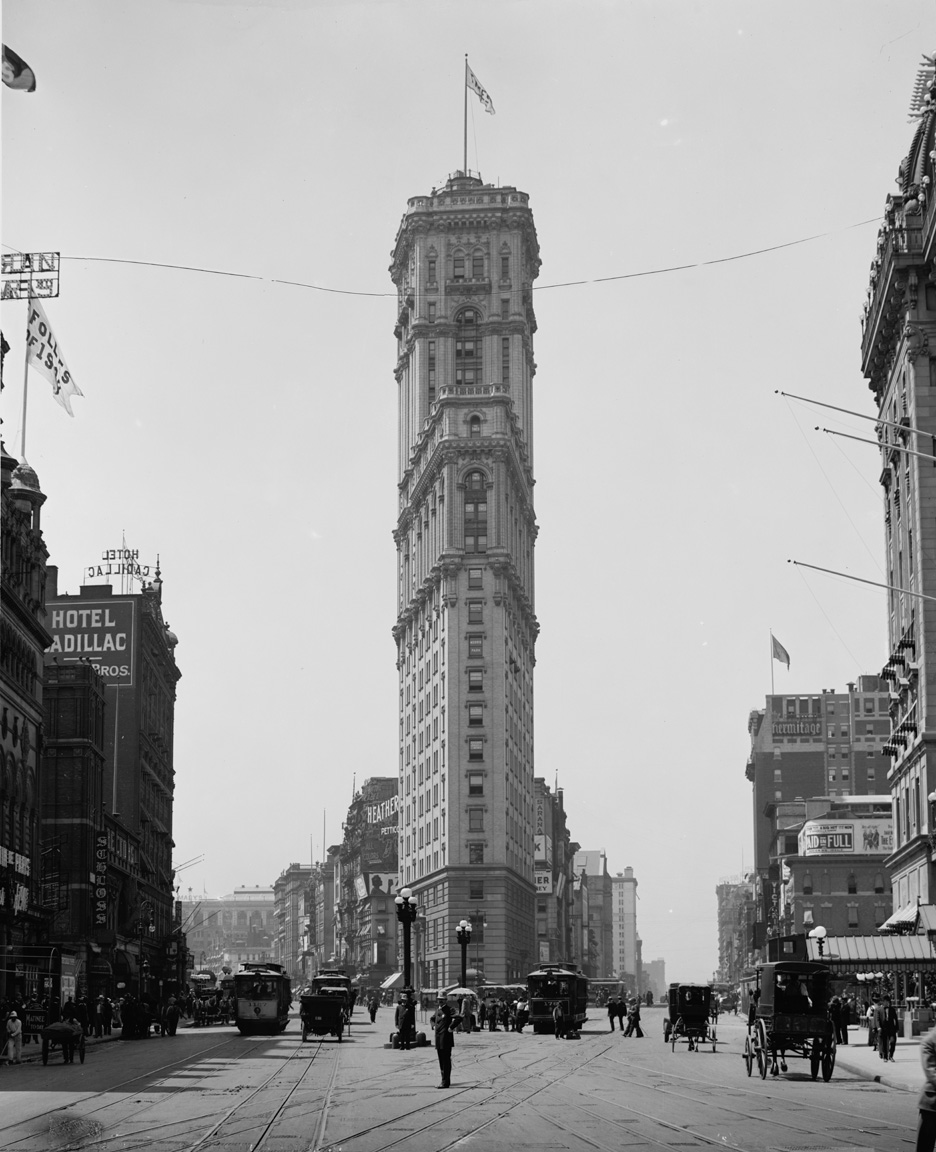The Skyscraper Museum is devoted to the study of high-rise building, past, present, and future. The Museum explores tall buildings as objects of design, products of technology, sites of construction, investments in real estate, and places of work and residence. This site will look better in a browser that supports web standards, but it is accessible to any browser or Internet device.
TIMES TOWER
Few people today realize that the building at the heart of Times Square covered with LED signs and animated screens - the tower from which the nationally televised New Year's Eve ball drops - is the same structure that from 1905 to 1913 served as the headquarters and printing plant of The New York Times newspaper. Built at the direction of the legendary owner and publisher Adolph Ochs, who had purchased the ailing Times in 1896, the new building was part of his larger plan to reinvigorate the newspaper. Ochs intended a building to "wake up the nation" and to call attention to the paper's resurgence under his leadership.
Ochs decided to relocate the Times from its 1889 high-rise on Newspaper Row to the a site more than four miles north - a small, but highly visible triangle of land bounded by Broadway, Seventh Avenue, and 42nd Street in a burgeoning area of hotels and theaters then known as Longacre Square. He hired the architect Cyrus Eidlitz and his partner Andrew McKenzie to design a 25-story skyscraper modeled on Giotto's campanile, the medieval bell tower of the Florence Cathedral, which the publisher had admired during his European travels. From a slender base that rose fifteen stories, an even narrower tower at the south end added ten floors, including an octagonal rooftop observatory for Ochs. Above the twelfth floor, the facade was encrusted with terra-cotta ornament that multiplied toward the top in ogee arches and projecting cornices.
The Times Tower was constructed in 1904, the same year that the IRT subway opened. The stop at 42nd Street was given the name Times Square. The below grade levels of the tower contained the printing presses and other machinery of production and could connect directly to the platforms of the IRT subway for speedy distribution north and south on that route. The historicism of the architecture was thus balanced by the modernity of the concept of paper publication and distribution.

